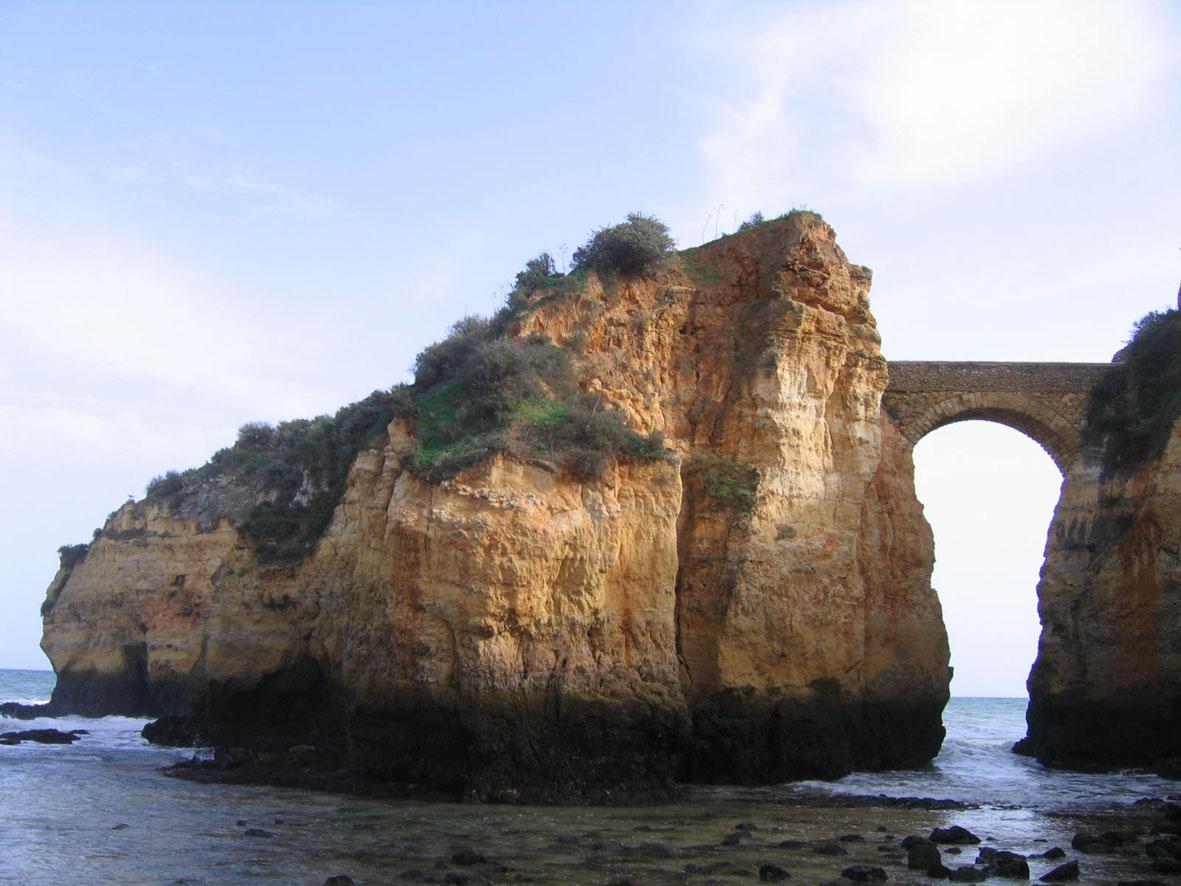you

Did you know?
On 02/07/2025
Hello everyone!
Hippos kill more Africans than lions, great white sharks and crocodiles combined
Lions are always portrayed as powerful and dangerous animals. The same goes for crocodiles and the great white shark, but in reality, encounters with hippos cause more deaths in Africa than these three predators combined.
Lagos is the largest city on the continent
The Nigerian capital has more than one and a half times as many citizens as New York, which helps to understand that Lagos is truly a megalopolis.
The government claims that the city has about 17.5 million inhabitants, but other estimates go as high as 21 million.
Have a nice day and good game ;)

Did you know?
On 25/06/2025
Hello everyone!
Lake Victoria, named after Queen Victoria by British explorer John Hanning Speke, is an African wonderland that boasts of being the largest lake on the continent.
But there are even more interesting facts about Lake Victoria in Africa, trust us! It is the second largest freshwater lake in the world by surface area.
The question you might be asking yourself is: where is Lake Victoria in Africa?
Spreading across three countries – Tanzania, Uganda and Kenya – it is a vital source of the Nile River, supporting millions of lives with its abundant fresh water.
Have a great day and enjoy the game ;)

Did you know?
On 18/06/2025
Hello everyone!
When considering the size of African countries, Algeria stands out as the largest country in Africa.
Spanning over 2.38 million square kilometers, it stretches from the Mediterranean coast to the deep Sahara Desert, embodying the geographical and cultural diversity that defines Africa.
This vast country is a mosaic of landscapes, from the breathtaking sand dunes of the Sahara to the lush oases and rugged Atlas Mountains, offering a microcosm of the vast ecological and cultural diversity of the African continent.
Have a great day and enjoy the game ;)

Did you know?
On 11/06/2025
Hello everyone!
To the question “how many countries are there in Africa?” To answer this question, we must count the number of sovereign nations. The continent has 54 recognized countries, Africa is the second most populous continent, home to approximately 1.3 billion people.
This diversity is reflected in the myriad of languages spoken – over 3,000 – and a wide range of governmental structures, from expansive democracies to kingdoms that still preserve ancient traditions.
This complexity and diversity defy many preconceived notions about Africa, highlighting its role as a powerful player on the world stage.
Have a great day and enjoy the game ;)

Did you know?
On 04/06/2025
Hello everyone!
Africa, often referred to as the cradle of civilization, is a continent where past and present coexist in a rich array of cultures, landscapes, and histories.
An intriguing fact is that Africa is the only continent that spans from the northern temperate zone to the southern temperate zone, making its climatic diversity as diverse as its cultures. Africa’s Sahara Desert is the largest hot desert in the world, while its Congo Basin is home to the second largest rainforest on the planet.
These geographical extremes represent Africa’s environmental richness and its pivotal role in our global ecosystem.
Have a good day and good game ;)

Did you know?
On 28/05/2025
Hello everyone!
One of the greatest Viking warriors was… a woman
DNA analysis of bones found in a tomb rich in warrior symbols is pushing historians to reconsider the role of women among the Vikings.
Next to her, a sword, an axe, a spear, arrows, a knife, two shields, as well as a sacrificed mare and stallion! The tomb of a great warrior, an expert in military strategy as indicated by the presence of pawns and a game board.
A study of the bones establishes that this skeleton is in fact that of a woman! Excitement among specialists. Of course, the Nordic sagas do mention warrior women. But they are mythological figures.
But in 2017, a DNA analysis confirmed that the tomb never had more than one occupant who is “the first confirmed high-ranking female Viking warrior”. Having "planned, led and taken part in battles", she died around the age of 30. She was 1.70 meters tall, a large size for the time.
Have a good day and good game ;)

Did you know?
On 21/05/2025
Hello everyone!
The Silent Hero: Nicholas Winton and His Unsung Acts of Bravery
In 1938, Nicholas Winton was a well-to-do 29-year-old Briton. However, in the months before World War II broke out in September 1939, he became a hero, saving hundreds of young lives from the clutches of death. In the chaos of the war preparations, he secretly helped 669 Czech children escape Nazi concentration camps.
He organized eight trains to transport these children to Britain and even used his savings to find new homes for them. His only wish was to ensure that these children survived. Winton’s efforts illuminated humanity during one of its darkest times.
Despite the praise, Nicholas Winton remained humble, saying, “To do good is not to make it known. I did not deliberately keep it a secret, but I did not speak of it.” »
Have a nice day and good game ;)

Did you know?
On 14/05/2025
Hello everyone!
When geese go from feasting to defending Rome.
The legend of the Capitoline Geese is deeply rooted in the history of Rome.
The story, passed down over the centuries, symbolizes vigilance and divine protection, while inspiring many traditions and rituals.
In 390 BC, the Gauls led by Brennus attacked Rome, forcing the Romans to take refuge on the Capitol.
The sacred geese of Juno alert the Romans of a night attack, allowing Marcus Manlius to repel the Gauls.
The legend of the Capitoline Geese symbolizes vigilance and divine protection, still celebrated today in Rome.
Have a good day and good game ;)

Did you know?
On 07/05/2025
Hello everyone!
The Amazons: These warrior women really existed, according to this discovery!
These warrior women on horseback could well have existed during Antiquity. In Azerbaijan, archaeologists have found graves of women buried with arrows, and having ridden horses.
For the ninth of his twelve labors, Hercules had to steal the belt of Hippolyta, daughter of Ares, the god of war, but above all queen of the Amazons. These legendary women lived without men, rode horses, shot bows, went into battle and died as heroines. Legend even has it that they cut off their right breasts in order to be better archers.
This people of powerful women, described in Greek mythology, may have really existed, as suggested by a new archaeological discovery in Azerbaijan.
The necklaces found in the tombs contained carnelian, a semi-precious stone. “It is often seen when people are high priestesses or goddesses. So it's a brand of a woman with status.”
Have a nice day and good game ;)

Did you know?
On 30/04/2025
Hello everyone!
And what about women?
Apart from Joan of Arc, it is not easy to find an example of a woman who wore armor, as knightesses have been relegated to the dustbin of history. Some took part in the crusades, as chroniclers of the time recount.
In 1097, Florine of Burgundy, dressed in armor, set off for Jerusalem with her husband Sven. Together, they led 1,500 knights. Florine fought until her last breath when their convoy was attacked.
Another case is that of Marguerite de Beverley. In 1187, she arrived in Jerusalem and fought for two weeks: "Although a woman, I had the appearance of a warrior, I carried a weapon." Some even joined orders of chivalry.
In Catalonia, the Order of the Axe was founded in 1149 in honor of the women who took part in the defense of the city of Tortosa.
A century later, in Italy, the Order of the Glorious Saint Mary, reserved for noble women, was also created. Some women played the role of war leaders – most often because of the death or captivity of their husbands.
Jeanne de Montfort took command of the army of Brittany when her husband was taken prisoner in the War of the Breton Succession. As a skilled strategist, she repelled the attackers during the siege of Hennebont in 1342.
Have a good day and good game ;)

Did you know?
On 23/04/2025
Hello everyone!
Knights: superheroes of the Middle Ages
Bayard, Du Guesclin, Godefroi de Bouillon… These armored vigilantes perform exploits to bring order to medieval society. Hear ye, hear ye! We present to you these supermen.
In the Middle Ages, superheroes are them, the knights. A lady is in distress? They rush to her rescue, like Bayard who saves a gentleman's wife from dishonor at the siege of Brescia, in Italy.
King Philip Augustus nearly loses his life on the battlefield? Immediately, Guillaume des Barres, an illustrious knight, draws his sword and saves him, in the middle of the Battle of Bouvines in 1214.
Superheroes, we tell you. A thousand years later, they continue to fascinate. There are countless films, books or video games devoted to them.
The values of honor and loyalty that they defend, like their warlike feats, partly explain the interest that they continue to arouse.
Have a good day and good game ;)

Did you know?
On 16/04/2025
Hello everyone!
They dress up to combat insecurity in their neighborhood, or to help their fellow citizens in need.
The phenomenon appeared in the United States in the 2000s, and is called Real Life Super Heroes: the superheroes of reality.
There are said to be a few hundred of them in North America, a handful in France. They inspired the comic book Kick-Ass (2008), which was brought to the screen in 2010.
However, unlike what happens in violent fiction, these vigilantes generally focus on social issues, dealing less slaps to criminals than helping the poor.
They are, to borrow a phrase from the book Real Life Super Heroes (published by Serious Publishing 2012) dedicated to them by photographer Pierre-Élie de Pibrac, "a metaphor for the heroic act that self-sacrifice and solidarity have become in our society".
Have a good day and have a good game ;)

Did you know?
On 09/04/2025
Hello everyone!
Robinson Crusoe exists and he protects giant tortoises.
He is even 86 years old and his name is Brendon Grimshaw. The only difference with the fictional character is that he bought the island on which he lives instead of being stranded there.
The old man bought the island, located in the Indian Ocean, fifty years ago. In half a century, Grimshaw transformed what was at the time "a bush" into a natural park.
According to the octogenarian, only three other people would have lived on the small island called Moyenne where he is home to 120 giant tortoises. A species that had almost disappeared from the Seychelles at the beginning of the last century.
For the Minister of the Interior of the Seychelles, Brendon Grimshaw is "a naturalist, a philanthropist and a hard worker". The man lives in a small house that he built himself.
In front of the entrance, you can read a sign that says "respect the turtles, they are probably older than you". A way to invite the preservation of an ecosystem weakened by global warming and pollution.
Have a good day and good game ;)

Did you know?
On 02/04/2025
Heroes, revealers of a society
The common points between these heroes are obvious. They all have their text(s), and are therefore well known to the cultured public of the time.
They are warriors, conquerors, sovereigns, with whom the aristocrats of the time can identify.
Their exploits take place almost exclusively on the battlefield: there are no scientists, artists, inventors.
We have not yet reached the technological prowess of Tony Stark or the cunning of Ant-Man: at the time, heroism is warrior.
What these heroes are not is just as revealing. The last Avengers gives pride of place to women: the Scarlet Witch, Okoye, the Black Widow and of course the all-powerful Captain Marvel.
Totally unthinkable in the Middle Ages? Well no, because around 1370 a French author (Jean Le Fèvre) proposed Neuf Preuses, bringing together several heroic female figures, such as the Amazon Semiramis or the legendary queen Tomyris, adversary of the Persian Cyrus...
A model that also enjoys great public and artistic success, even if it does not rival that of the Preux.
Have a good day and good game ;)

Did you know?
On 26/03/2025
Hello everyone!
The Medieval Justice League
This prestigious team includes: Hector, Alexander and Caesar; Joshua, Judas Maccabeus and David; King Arthur, Charlemagne and Godfrey of Bouillon.
They are called the Nine Worthies. The model will be immensely successful for several centuries. As with the Avengers, joining this team becomes the supreme distinction: when we want to praise someone, for example Du Guesclin, we say that he is the "tenth worthie".
These nine heroes intersect all the sources of medieval culture. The fascination with Greco-Roman antiquity, first of all, which reminds us that we do not need to wait for a hypothetical Renaissance.
Alexander has been famous since the Romance of Alexander, which recounts his conquests and exploits (notably underwater). Caesar has never really ceased to be a reference. Hector became one again in the 12th century, with the Roman de Troie.
Let us recall that the Franks claimed to be descended from the Trojans who fled the city when it fell (like the Romans with Aeneas): they therefore appropriated the Trojan figures, and had a more critical view of Greek heroes like Achilles or Ulysses.
Then, King David, victor over the giant Goliath; Judas Maccabée, leader of the Maccabean revolt and hero of a text written in the middle of the 13th century; Joshua, finally, model of the warrior winning the victory.
Arthur, of course, is a superstar, the Captain America of the time. Charlemagne is an attested historical figure, but also a legendary character, through for example the Song of Roland. Finally, Godfrey of Bouillon, crusader and first sovereign of the kingdom of Jerusalem, also had his novel (the Knight of the Swan cycle).
Have a good day and good game ;)

Did you know?
On 19/03/2025
Hello everyone!
Vin Diesel has a script for Guardians of the Galaxy where Groot's dialogues are detailed.
Voice dubbing of Rocket's best friend, if he is heard repeating "My name is Groot" in a loop regardless of the context, his sentences actually have a meaning: the director James Gunn had him print a "Groot version" just for him.
Have a nice day and good game ;)
Reference: Booska-p.com

Did you know?
On 12/03/2025
Hello everyone!
Before putting on the Hawkeye costume, Jermy Renner trained to handle the bow with Olympic athletes.
"They gave me a few lessons. I learned the basics, the positions to hold. It really helped me."
A few more hours of training would not have been superfluous if we are to believe WIRED where we can read that "from the point of view of a professional archer, with his technique Haweye would not even be able to hit Tony Stark's house".
Have a good day and good game ;)
Reference: Booska-p.com

Did you know?
On 05/03/2025
Hello everyone!
Thor could have been played by James Bond!
In 2008, Daniel Graig was approached by Marvel to play the God of Thunder.
Graig however refused the offer, considering that he already had a lot to do with 007.
Have a nice day and good game ;)
Reference: Booska-p.com

Did you know?
On 26/02/2025
Hello everyone !
Maurice Bernard Sendak wanted to become a children's illustrator the day he saw Walt Disney's “Fantasia” for the first time at the age of 12.
Good day and good game ;)
Anecdote provided by https://commedansunlivre.fr

Did you know?
On 19/02/2025
Hello everyone !
When writing, Stephen King sets a goal of 10 pages per day, including holidays.
No wonder he is one of the most prolific authors of his generation!
Good day and good game ;)
Anecdote provided by https://commedansunlivre.fr

Did you know?
On 12/02/2025
Hello everyone !
Basically, Sherlock Holmes should have been called Sherrinford.
Arthur Conan Doyle's wife managed to change his mind.
Good day and good game ;)
Anecdote provided by https://commedansunlivre.fr

Did you know?
On 05/02/2025
Hello everyone !
Samuel Beckett wrote all day without stopping.
Then he would take scissors, cut out his sentences and paste them in a new order.
Good day and good game ;)
Anecdote provided by https://commedansunlivre.fr

Did you know?
On 29/01/2025
Hello everyone !
The word “author” has existed since Antiquity.
Coming from the words “auctor” and “augere” (to make grow), the word “auctor” literally meant “founder”.
“Auctrix” was then its feminine, which makes the word “autrice” an older and more legitimate term than its counterpart “auteure”.
Good day and good game ;)
Anecdote provided by https://commedansunlivre.fr

Did you know?
On 22/01/2025
Hello everyone !
The novel “Robinson Crusoe” written by Daniel Defoe is inspired by a true story.
In 1704, following a disagreement with his captain, a Scottish sailor, Alexander Selkirk, was exiled to an island off the coast of Chile where he lived alone for four years.
On his return he had his story written, which inspired the famous book.
In 1966, the island was renamed Robinson Crusoe Island in homage.
Good day and good game ;)
Anecdote provided by https://commedansunlivre.fr

Did you know?
On 15/01/2025
Hello everyone !
Charles Dickens was a member of a secret society, The Ghost Club, which specialized in ghost hunting.
Good day and good game ;)
Anecdote provided by https://commedansunlivre.fr

Did you know?
On 08/01/2025
Hello everyone !
The word "swag" was coined by William Shakespeare.
Indeed, originally, the playwright invented the verb “to swagger” and used it in his writing.
Good day and good game ;)
Anecdote provided by https://commedansunlivre.fr

Did you know?
On 01/01/2025
Hello everyone !
The “Novel of Genji” is a classic of Japanese literature.
It was written over 1000 years ago and brings to life 430 characters over four generations.
Good day and good game ;)
Anecdote provided by https://commedansunlivre.fr

Did you know?
On 18/12/2024
Hello everyone !
Bruno Bettelheim is the author of “The Uses of Enchantments”, an international best-seller explaining that fairy tales unconsciously are preparing children to the world they’ll be living in.
Good day and good game ;)
Anecdote provided by https://commedansunlivre.fr

Did you know?
On 11/12/2024
Hello everyone !
The expression “Fairy tale” comes from a title published in 1697, a work by Madame d’Aulnay, a pioneer of the genre, known under the name “The island of happiness”.
Good day and good game ;)
Anecdote provided by https://commedansunlivre.fr

Did you know?
On 27/11/2024
Hello everyone !
The Highlands, Scotland
The Highlands are a mountainous region to the north and west of the Highland Boundary Fault which runs through Scotland from Arran to Stonehaven.
This very sparsely populated and infertile region is covered with hills and mountains, several peaks of which exceed 1,000 meters in altitude, the Grampians Mountains to the south and the mountains of the Northwest Highlands to the north.
Thus, the highest peak in Scotland and the British Isles, Ben Nevis, rises to 1,345 meters above sea level in the Grampian Mountains.
These two massifs are separated by the geological fault of Glen Mor in which the Caledonian Canal stretches which connects the North Sea to the Scottish Sea and, beyond, to the Atlantic Ocean.
This canal passes through three large lakes: Loch Ness (famous for its so-called monster), Loch Lochy and Loch Oich.
The fictional Hogwarts School is located in the Highlands in the Harry Potter saga.
Good day and good game ;)
Photo by Kareni

Did you know?
On 20/11/2024
Hello everyone !
Innsbruck, Austria
Innsbruck is an Austrian city located in the west of the country, in a valley in the heart of the Alps.
It is the second largest city in Europe in this situation, after its Alpine twin Grenoble.
It is the capital of the State of Tyrol, and is crossed by the Inn river.
Its name comes from the name of the river Inn and the word Brücke (“bridge” in German) and means “Inn bridge”.
It is the fifth largest city in Austria in terms of population, after Vienna, Graz, Linz and Salzburg.
The city had around 121,000 inhabitants in 2012, 131,000 in 2021, 190,000 with the agglomeration.
In 1964, the city received the Europe Prize.
It hosted the Winter Olympics twice in 1964 and 1976 as well as the Winter Youth Olympics in 2012.
Good day and good game ;)
Picture by Pierre Bona

Did you know?
On 13/11/2024
Hello everyone !
Dolni Morava in Czech Republic Suspension bridge
Dolní Morava is a municipality in the Ústí nad Orlicí district, Pardubice Region, Czechia. Its population was 407 inhabitants in 2022.
The long village of Dolní Morava is located in the Morava valley, which rises in the territory of Velká Morava.
Dolní Morava is 8 km east of Králíky, 34 km northeast of Ústí nad Orlicí, 74 km east-northeast of Pardubice and 169 km east of Prague .
The municipality is bordered by Poland to the west and north, by Staré Město to the east, by Malá Morava to the east and south, and by Králíky to the southwest.
The municipality is partly located in the Kralický Sněžník nature reserve.
Good day and good game ;)
Photo by Thomas Drapal

Did you know?
On 06/11/2024
Hello everyone !
Lake Königssee
Königssee in the Berchtesgaden National Park whose towering Alpine rocks fall almost vertically towards the lake shore, which measures 192 meters at its deepest point.
The echo of the world-famous Königssee on the steep rock walls is an integral part of the navigation.
Behind the St. Bartholomä peninsula stretches the immense eastern wall of Watzmann. In St. Bartholomä, the pilgrimage church built in 1134 impresses with its famous burgundy domes.
The 400-year-old smokehouse, where Königssee fishermen used an ancestral tradition to transform arctic char into “Schwarzreiter”, by smoking them over birch wood, a unique specialty specific to Königssee.
Good day and good game ;)
Photo by LVER

Did you know?
On 30/10/2024
Hello everyone !
Hel Peninsula
The Hel Peninsula located in northern Poland, in the Pomeranian Voivodeship, is a long and narrow strip of sandy land approximately 35 km long, with a width varying from 100 m to 3 km, which separates the bay of Baltic Sea Puck.
Fortified in the mid-1930s, Hel is a town in Poland located on the peninsula of the same name, north of Gdańsk.
Good day and good game ;)
Photo by Monsieur Incognito

Did you know?
On 23/10/2024
Hello everyone !
Lake Hallstättersee
Hallstättersee is a lake in Upper Austria in the Salzkammergut region, crossed by the Traun River, a right tributary of the Danube.
It is located at the northern foot of the Dachstein Massif.
The lake is 5.9 kilometers long and 2.3 kilometers wide.
The water level is determined by the Seeklause Steeg dam at the northern end of the lake.
On its western shore lies the pre- and protohistoric village of Hallstatt.
Good day and good game ;)
Photo by Tigerente

Did you know?
On 16/10/2024
Hello everyone !
Verdon Gorge
The Verdon gorges, Verdon canyon or Grand Canyon are a set of gorges in France located in Provence, between the Alpes-de-Haute-Provence and the Var.
Dug out by the Verdon in the middle of its course, they separate the Castellane Prealps to the south from the Digne Prealps to the north, forming a narrow valley 25 kilometers long and reaching up to 700 meters deep.
Very quickly, the Verdon is enclosed between reliefs which exceed 1,500 meters in altitude while the bed of the river is at an altitude of 630 meters upstream and 510 meters downstream.
Its narrowness and depth - from 250 to 700 meters deep by 6 to 100 meters wide in the bed of the river and 200 to 1,500 meters wide from one slope to the other at the top of the gorges - have made the international reputation of the canyon.
Good day and good game ;)
Photo by Ben Lieu Song

Did you know?
On 09/10/2024
Hello everyone !
Matterhorn
The Matterhorn is, with its altitude of 4,478 meters, the 12th highest peak in the Alps. It is located on the Italian-Swiss border, between the canton of Valais and the Aosta Valley.
The Matterhorn is the best-known mountain in Switzerland, particularly for the pyramidal appearance it offers from the town of Zermatt, in the German-speaking part of the canton of Valais.
His image is regularly used for the logos of brands such as Toblerone or Ricola.
The Matterhorn has two distinct peaks at the ends of a 100m rocky ridgeline which marks the border and watershed between Switzerland and Italy.
If the Matterhorn is the highest point of Valtournenche in the south, it is exceeded in the north by four summits which surround it: the Weisshorn (4,506 m), the Dom des Mischabel (4,545 m), Monte Rosa (4,634 m ) and the Liskamm (4,527 m).
Good day and good game ;)
Photo by Simo Rasanen

Did you know?
On 02/10/2024
Hello everyone !
Kornati Archipelago
The Kornati archipelago is a group of islands located in the center of the Dalmatian coast, south of Zadar in Croatia.
The densest archipelago in the Mediterranean, it has 147 islands and islets over an area of 320 km².
Kornat, with a surface area of 3,252 hectares, is the largest of the islands — it is 25.2 km long and has a maximum width of 2.5 km.
The coastline of these islands is deeply indented and has dizzying cliffs which rise up to a hundred meters above the waves.
The islands are crossed by kilometers of dry stone walls separating the properties.
Speaking of the archipelago, geologists describe its mineral landscape as karstic and explain its relief tormented by mountains submerged at the end of the last ice age.
The Kornati Archipelago National Park encompasses 101 islands of the archipelago as well as the surrounding sea over an area of 224 km2.
It was declared a national park in 1980.
Good day and good game ;)
Photo by Remi Jouan

Did you know?
On 25/09/2024
Hello everyone !
Lake Bled
Lake Bled is a lake of glacial origin in Slovenia.
Located in the Upper Carniola region 55 kilometers northwest of the center of the capital Ljubljana, on the eastern edge of the Julian Alps.
The lake lies at the foot of the Pokljuka plateau near the outlet of the Bohinj valley, at an altitude of 475 meters.
Its banks are extensively developed: it is bordered to the east by the health resort of Bled, and its medieval castle (11th century) which dominates the lake at the top of a 130 meter cliff.
The lake is small, 2,120 meters long by 1,380 meters wide at most, for an area of 145 hectares.
The water temperature is mild, averaging 25°C in summer. With a maximum depth of 30 meters, it encircles the country's only island, the island of Bled.
Typical boats (pletne) which look like gondolas allow you to reach the islet.
The lake has been the scene of world rowing championships on several occasions (1966, 1979, 1989 and 2011).
Good day and good game ;)
Photo by Canadianhockey91

Did you know?
On 18/09/2024
Hello everyone !
Plitviče Lakes
Plitvice Lakes National Park, called Nacionalni park Plitvička jezera in Croatian, is a national park in Croatia, which is located halfway between the cities of Zagreb and Zadar within a karst plateau.
It is both the oldest national park in southern Europe and the largest in Croatia.
It was created on April 8, 1949 and added to the UNESCO World Heritage List in 1979.
The park, with an area of 296 square kilometers, includes the Plitvice Lakes, sixteen large lakes, linked together by 92 waterfalls or small turbulent rivers.
But also the surrounding forest where the Korana river is born and which is home to many rare animal and plant species.
Good day and good game ;)
Photo by Hong Kong

Did you know?
On 11/09/2024
Hello everyone !
Lagos Beaches
Lagos, "The Lakes", is a Portuguese city located in the south of the Algarve, at the mouth of the Bensafrim.
Lagos is an old seaport with a history dating back over 2000 years. Its name Lagos derives from the Gallic Lacobriga.
Lagos was first a trading post where the Carthaginians recruited Gallic mercenaries to fight the Romans during the Wars.
It was then colonized by the Romans, and depended on the Roman province of Lusitania.
There are still some Gallo-Roman remains in and around Lagos itself.
It was probably at Lacobriga, near Mount Molião, that the rebel general Sertorius, with the support of Lusitanian auxiliaries, defeated the army of Q. Caecilius Metellus Pius sent to arrest him.
Lacobriga was already a considerable port at that time. In the 6th century, the city was successively governed by the Visigoths from the Kingdom of Toledo then by the Byzantines.
Good day and good game ;)
Photo by Jironi B

Did you know?
On 04/09/2024
Hello everyone !
The Bardenas Reales
The Bardenas Reales are a semi-desert area with an area of 39,200 ha (392 km²) located in Spain, in the southeast of Navarre, between Tudela and Carcastillo.
More precisely, it brings together the Bardena Blanca, desert, the Bardena Negra, covered with a xerophilic forest and El Plano, steppe and agricultural.
This nature reserve has particular vegetation which has earned it the status of a world biosphere reserve by UNESCO.
Erosion has also shaped impressive rock formations, of which the Castil de Tierra or the Rallon and Piskerra massifs, made up of badlands, are the most emblematic manifestations.
This particular landscape has made it a filming location for several films and audiovisual series, including scenes from Game of Thrones.
Good day and good game ;)
Photo by Bruno Barral

Did you know?
On 28/08/2024
Hello everyone !
The Youth Olympic Games!
Starting in 2010, the Olympic Games host the Youth Olympic Games (YOG), where athletes are between 14 and 18 years old.
The YOG was created by Jacques Rogge, President of the IOC, in 2001.
The decision is approved during the 119th IOC Congress.
The 2010 Summer Youth Olympic Games were held in Singapore and the 2012 Winter Youth Olympic Games were held in Innsbruck, Austria.
These Games last less than the traditional Olympic Games.
Summer ones last twelve days and winter ones, nine days.
3,500 athletes and 875 officials will participate in the 2010 Summer Olympics, and 970 athletes and 580 officials in the Winter Olympics.
The sports on the program coincide with those of the traditional Olympic Games, however the number of disciplines and events is reduced.
Good day and good game ;)

Did you know?
On 21/08/2024
Hello everyone !
The Paralympic Games!
In 1948, Sir Ludwig Guttman, determined to promote the rehabilitation of World War II soldiers, organized a sports competition between different hospitals at the same time as the 1948 Summer Olympics in London.
This competition, then known as the Stoke Mandeville Games, became annual.
For the next twelve years, Guttman and others continued to use sport as a healing therapy.
At the 1960 Summer Olympics in Rome, Guttman brought together 400 athletes to compete in the "Parallel Olympics" and became the first Paralympics.
The Paralympics have been held every Olympic year since then, and have been held in the same city as the Olympics since the 1988 Seoul Games.
Good day and good game ;)

Did you know?
On 14/08/2024
Hello everyone !
Games from Roman times to the 18th century!
Following the Roman invasion, the Games were opened to non-Greeks.
The prestige of the Games was such that several emperors took part.
On the advice of Bishop Ambrose of Milan, Emperor Theodosius I banned the Games in 393-394 because of their pagan character.
This ban does not specifically target the Olympic Games but in general the Circus Games of which these are a particular event.
The Olympic Games underwent some timid attempts at renovation between the end of the 18th century, when the ruins of the Olympia sites were discovered, and the end of the 19th century.
Let us cite the Olympiad of the Republic which was held in Paris in 1796, 1797 and 1798.
Good day and good game ;)

Did you know?
On 07/08/2024
Hello everyone !
A revival for modern games in the 20th century!
Originally, the Games were exclusively summer.
Figure skating and ice hockey made appearances on the Olympic program even before the creation of the Winter Games in 1924.
After the initial success of the events in Athens in 1896, the Olympics in Paris in 1900 and Saint Louis in 1904 were buried in the programs of the universal exhibitions.
These games saw women participating in the events for the first time, such as Charlotte Cooper, the first Olympic champion.
The 1906 Olympic Games in Athens, not subsequently recognized by the International Olympic Center, marked a renewed interest of the public and athletes, with very international participation.
Good day and good game ;)

Did you know?
On 31/07/2024
Hello everyone !
The crown of Olympic heroes!
From the Seventh Olympiad (752 BC), the Olympic champion receives a wild olive wreath, a palm branch and a red woolen ribbon called the tænia.
Initially reserved only for wealthy male Greek citizens, the Games led to an Olympic truce.
The latter does not stop conflicts, but allows athletes and spectators to freely cross war zones without being worried.
The significance of an Olympic title is considerable. The champions are authentic folk heroes and are showered with gifts and honors upon their return to their city.
They have been fully professional since the 5th century BC. AD and can decide to defend the colors of another city.
These changes of allegiance often cause unrest, sometimes significant, in the “betrayed” city.
We can thus cite the case of Astylos of Crotone (6 Olympic titles), who moved from Crotone to Syracuse in 484 BC. BC, causing serious unrest in Crotone.
Good day and good game ;)

Did you know?
On 24/07/2024
Hello everyone !
A well-established tradition!
The first Olympic Games are reputed to have taken place in 776 BC. BC on the initiative of Iphitos, king of Elis.
This year marks the beginning of the Olympic calendar, according to which the years are grouped into Olympiads, and year 1 of the Greek calendar adopted in 260 BC.
However, it is likely that the Games were even older, given the abundance of offerings from the Geometric period found at Olympia.
From then on, the Games gained importance throughout ancient Greece, but there are nearly 300 sports meetings of the same type, the agones.
Under the Roman Empire, the Olympic Games formed, with the Pythian Games, the Nemean Games, and the Isthmian Games, a cycle of sacred games, one of which returns each year.
The athlete who wins prizes at these four Panhellenic Games is designated by the title “periodonikes”.
Good day and good game ;)

Did you know?
On 17/07/2024
Hello everyone !
The original games events!
Many legends surround the origin of the ancient Olympic Games.
One says that Heracles built the Olympic stadium and the surrounding buildings in honor of his father Zeus, after having completed his twelve labors, and would have organized with his four brothers a race in which he crowned the winner with a branch olive tree.
He would also have defined the length of the Olympic stadium by surveying it with the length of his foot while taking 600 steps forward.
The competition program includes equestrian events (two- or four-horse chariots) and athletic events known as gymnastics (running over several distances, discus throwing, long jump, javelin throwing, pentathlon, wrestling, pugilism and pankration).
Discus, length and javelin do not give an Olympic title, but are part of the five pentathlon events with the stadium race and wrestling.
Good day and good game ;)

Did you know?
On 10/07/2024
Hello everyone !
Impressive athletes!
Some athletes have impressed the world by winning countless medals.
The most decorated athlete, Winter and Summer Games combined, is none other than the swimmer Michael Phelps for the United States, he won between 2004 and 2016 no less than 28 medals including 23 gold, 3 silver and 2 bronze.
The second most decorated athlete of the games, Larissa Latynina, represented the Soviet Union between 1956 and 1964. She won 18 medals in artistic gymnastics including 9 gold, 5 silver and 4 bronze, an extraordinary performance.
It is the Finnish Paavo Nurmi who holds the title of third athlete with the most medals of the Games. His favorite discipline is none other than athletics, and he won 12 Olympic medals between 1920 and 1928. His record? 9 gold medals and 3 silver!
Good day and good game ;)

Did you know?
On 03/07/2024
Hello everyone !
The Olympics that make history!
Certain editions of the Olympic Games have therefore marked history and greatly changed them.
If women were excluded from the Games in 1896 because it went against the general ideology but also against that of Pierre de Coubertin, initiator of the modern Games, they still participated in the Olympic Games in 1900 without having been invited.
The women present were able to compete in tennis and golf events.
It was on this occasion that two of the first women to participate in the Olympic Games in 1900 won two gold medals: Charlotte Cooper won the title of Olympic tennis champion and Margaret Abbott that of Olympic golf champion.
Good day and good game ;)

Did you know?
On 26/06/2024
Hello everyone !
The games are open to all!
The rules for participating in the Olympic Games have evolved significantly.
Originally, only amateur athletes were allowed to participate in the Olympic Games: participation was prohibited for professional athletes.
Professional athletes were only allowed to participate in the Olympic Games from 1981.
Women have also been banned from participating in the Olympic Games in the past: they were in fact excluded from the 1896 Games.
They only had the right to participate officially from 1900, but not in all events.
However, since 2007, the Olympic charter has required the presence of women in all sports.
The evolution of the Olympic Games also led to the appearance of the Paralympic Games in 1960 and the creation of the Youth Olympic Games in 2010, reserved for athletes aged 15 to 18.
Good day and good game ;)

Did you know?
On 19/06/2024
Hello everyone !
From ancient Greek games to modern Olympic games!
The concept of the Olympic Games initially appeared in Ancient Greece.
At the time, the Olympic competitions were made up of gymnastics events (running, javelin throwing, shot put, wrestling, pentathlon, etc.) but also horse racing events (chariot races).
Today, more modern disciplines are represented.
A total of 45 disciplines were to be represented at the Tokyo Olympics in 2020 for a total of 339 events!
The first modern Summer Olympic Games took place in 1896 in Greece, in Athens, and the first Winter Olympic Games took place in France, in Chamonix, in 1924.
Good day and good game ;)

Did you know?
On 12/06/2024
Hello everyone !
The first Olympic games
The first Olympic Games were organized in the 8th century BC, in Olympia, Greece.
They took place every four years for 12 centuries.
Then, in the 4th century AD, all pagan festivals having been banned by Emperor Theodore I, the Olympic Games disappeared.
However, the sporting tradition was resurrected, around 1,500 years later, during the first modern Olympic Games, which took place in Greece in 1896.
Good day and good game ;)

Did you know?
On 05/06/2024
Hello everyone !
The Olympic flag
The Olympic flag, designed in 1913 by Pierre de Coubertin, is one of the symbols of the modern Olympic Games, consisting of a flag formed by five rings of different colors (blue, yellow, black, green and red), intertwined on a background white, in order to represent the universality of Olympism.
The five intertwined rings represent the five continents united by Olympism, and the six colors (counting white in the background) represent all nations, as at least one of these colors was present in each country's flag , at the time of its creation in 1913.
This flag is the symbol of the universality of the Olympic spirit.
The current interpretation associates a continent with each color of the rings: green represents Oceania, black Africa, yellow Asia, blue Europe and red America.
It is refuted by the International Olympic Committee which associates the colors of the rings with the colors of the flags found on the five continents.
Good day and good game ;)

Did you know?
On 29/05/2024
Hello everyone !
Huacachina Oasis (Peru)
Huacachina is a village located in the region and province of Ica, Peru, near the city of Ica.
In 1999, its population was 115 inhabitants. The village is built around a small lake, making it the second oasis on the continent (after that of the Chilean village of San Pedro de Atacama).
Legend has it that the oasis was born when a beautiful native princess took refuge there to escape a hunter.
Vegetation would then have developed as soon as it came into contact with water, the origin of the dunes being explained by the fold marks left by the princess's coat.
Rumors continue today to maintain the story according to which the young woman became a mermaid, who still swims in the waters of the lake.
Good day and good game ;)
*Photo by Charles Gadbois.

Did you know?
On 22/05/2024
Hello everyone !
Galapagos Islands (Ecuador)
The Galapagos Islands are an archipelago and province of Ecuador located in the northeast of the South Pacific Ocean, at the latitude of the equator.
The Galapagos Islands are also called the “Columbus Archipelago”. Unofficially, they are also called “the Enchanted”.
“Islas de los Galápagos” means “Islands of the Sea Turtles”.
Among the 48 eminences that form the Galapagos archipelago only 19 of them are islands. The remaining 29 are uninhabited islets, with all the local population concentrated on the islands of Santa Cruz, San Cristóbal, Isabela and Floreana.
The interior of the islands is, due to its volcanic formation, quite mountainous; moreover, it is the craters which represent the highest points of the islands, which can reach up to 1,707 m (Wolf volcano).
The oldest island, San Cristóbal, only reaches an altitude of 730 meters compared to 1,476 meters for the island of Fernandina, one of the most recent.
The Galapagos Islands are depicted in the Mysterious Cities of Gold cartoon.
Good day and good game ;)
*Photo by David Adam Kess.

Did you know?
On 15/05/2024
Hello everyone !
Caño Cristales (Colombia)
The Caño Cristales “the stream of crystals” is a river in Colombia, a tributary of the Guayabero River, located in the Serrenia de la Macarena.
The Caño Cristales is commonly known as the “river of five colors” or “the most beautiful river in the world”. It owes this nickname to the plants which, from September to November, give it a green, red and yellow color.
The geological formations of the Caño Cristales River, with sediments and rocks approximately 1.2 billion years old, combined with the abundance of aquatic plants create a unique color.
The Caño Cristales is a torrential river with many waterfalls and rapids.
At several points of its bed we find natural cavities called "devil's pots" formed by the impact of pebbles carried by the current against relatively less hard parts of the bottom.
Once these pebbles fall into one of these cavities, they gradually widen it by spinning driven by the current and banging against its walls.
Good day and good game ;)
*Photo by Mario Carvajal.

Did you know?
On 08/05/2024
Hello everyone !
Los Roques Archipelago (Venezuela)
The Los Roques Archipelago is a federal dependency of Venezuela consisting of approximately 350 islands, cays or islets located approximately 130 km off the Venezuelan coast.
Gran Roque, the main island, is located in the north of the archipelago, 146 km from the small town of Naiguata, on the Venezuelan coast.
This island complex has a population of 1,500 inhabitants.
Due to the presence of a wide variety of seabirds and a very rich aquatic fauna, the government transformed the archipelago into a national park in 1972. It is the Los Roques Archipelago National Park.
The main island is Gran Roque (the big Roc), the only inhabited island and where the airport is located.
Other important islands are Francisqui, Nordisqui and Madrisqui y Crasqui. The archipelago was recognized as a Ramsar site on September 4, 1996.
These islands receive around 58,000 visitors per year, mainly for the day from Caracas.
Good day and good game ;)
*Photo by Berrucommons.

Did you know?
On 01/05/2024
Hello everyone !
Uyuni Salar (Bolivia)
The Uyuni Salar is a salt flat located in the highlands of southwestern Bolivia. It is near the town of Uyuni, from which it takes its name.
This expanse of salt is located at an altitude of 3,658 meters. With an area of 10,582 km, it constitutes the largest salt desert in the world and represents half of the planet's exploitable lithium reserves. Its dimensions are 150 kilometers by 100.
The disappearance of the prehistoric Lake Tauca, 14,000 years ago, gave birth to the largest salt crust in the world which today covers this salar. As it dried up, it left behind two small lakes still visible, Lake Poopó and Lake Uru Uru, as well as two large salt deserts, the Coipasa salar and the gigantic Uyuni salar.
The thickness of the water rarely exceeds 10 to 15 centimeters. As the salar is flat, it is flooded over its entire surface, making it a gigantic mirror.
A hotel, located in the center of the lake and built entirely of salt, is a curiosity of the place. The coral island of Incahuasi, covered in candelabra cacti, some of which are 1,200 years old, is isolated in this salty desert.
Good day and good game ;)
*Photo by Shark.

Did you know?
On 24/04/2024
Hello everyone !
Rainbow Mountain (Peru)
Vinicunca, nicknamed the “mountain of seven colors” or “rainbow mountain”, is a mountain in Peru. It peaks at an altitude of 5,200 m. It is located in the Cusco region, in the heart of the Andes.
Originally, Winikunka is the Quechua name for this mountain. Wini is a term used to refer to the black stones, which are very numerous in the region, and kunka means “neck”, and refers to the fineness and smallness of this mountain.
According to the investigation by the Landscape Office of the Directorate of Decentralization of Culture of Cusco, the colorations of the seven-colored mountain are due to its mineralogical composition.
The pink is attributable to the mixture of red clay, mud and sand. The whitish color results from the mixture of quartz sand and marl rich in calcium carbonate. The red is composed of ferruginous clays and clays belonging to the Neogene. The green is due to the mixture of phyllites and mafic clays. The earthy brown is produced by the conglomerate of magnesian rocks belonging to the Quaternary era. The mustard yellow is attributable to calcareous sandstones rich in sulphide minerals2.
Many indigenous populations live in small hamlets located in these mountains.
The main inhabitants are Quechuas, who are descendants of the Inca populations.
Originally covered in snow, Vinicunca subsequently suffered from global warming and revealed its colors since 2015. It is a landscape highly protected by local populations.
It is in this landscape that residents breed, particularly llamas, horses and alpacas.
Good day and good game ;)
*Photo by Eliott Bolduc.

Did you know?
On 17/04/2024
Hello everyone !
Lençóis Maranhenses National Park (Brazil)
Lençóis Maranhenses National Park is a national park in Brazil located in Maranhão.
The park has an area of 1,550 km and is located in the northeast of Maranhão about 270 km from São Luís. The park includes a set of dunes and interdune lagoons.
The Lençóis Maranhenses are certainly the natural jewel of North East Brazil, if not the entire country.
Antoine de Saint-Exupéry would certainly have chosen this “desert” for the meeting between the aviator and the Little Prince…
This marvelous white sand desert extends over nearly 155,000 hectares, an infinite and changing landscape of pristine dunes whose particularity is to offer a multitude of freshwater lagoons more than half the year.
With an average temperature close to 30°C throughout the year, this dune landscape suggests an arid environment, subject to a desert climate.
The rainfall is high, close to that of the Amazon forest, between 1400 mm and 1700 mm of precipitation per year and the rainy season mainly extends from December to April.
During this period, water accumulates in the hollows of the dunes and creates a multitude of miraculous lagoons.
Good day and good game ;)
*Photo by Joao Lara Mesquita.

Did you know?
On 10/04/2024
Hello everyone !
Iguazu Falls (Argentina)
Iguazú Falls comes from the guarani: y (“water”) and guasu (“great”), literally “the great waters”.
Located in the middle of the tropical forest, on the border between Argentina (80%) and Brazil (20%), national parks have been created.
This set of 275 waterfalls forming a front of approximately three kilometers. All of the waterfalls discharge up to six million liters of water per second.
Due to the drought affecting southern Brazil during the summer of 2021, the volume of water in Iguazú Falls is reduced by 80% compared to normal.
The highest of them, the Garganta del Diablo reaches 80 m in height.
They are among the most impressive in the world.
They were the scene of films such as Furia in Bahia for OSS 117 (1965), Moonraker, film from the James Bond series (1979), Miami Vice: Two Cops in Miami (2006), One Day on Earth (2007), Indiana Jones and the Kingdom of the Crystal Skull (2008), OSS 117: Rio No Longer Responds (2009) or even Black Panther by Ryan Coogler (2018).
Good day and good game ;)
*Photo by Reinhard Jahn

Did you know?
On 03/04/2024
Hello everyone !
Atacama Desert (Chile)
Blocked between the ocean trench and the Andes mountain range, the Atacama Desert is known to be one of the driest regions on Earth.
Certain areas can in fact be completely deprived of precipitation for more than 50 years.
This natural barrier is made up of active volcanoes reaching 6,000 meters, surrounded by turquoise lagoons, geysers and deep valleys.
The Atacama Desert is renowned for its starry nights due to its location in the intertropical zone, combining extreme drought, altitude and very little light pollution.
Several international astronomical observatories have been established in this “extraterrestrial” desert where NASA tested small vehicles before they went to explore Mars.
The four-wheeled robot called Zoë found colonies of bacteria and lichens on two distinct sites in this desert, which nevertheless has the lowest density of organic activity on Earth.
Good day and good game ;)
*Photo by Naxsquire.

Did you know?
On 27/03/2024
Hello everyone !
Mount Roraima (Venezuela)
Mount Roraima is a mountain in South America shared between Brazil, Guyana and Venezuela.
Discovered and explored late in the 19th century, Mount Roraima was not climbed until 1884 by a British expedition.
An account of one of these expeditions largely inspired Arthur Conan Doyle to write his adventure novel The Lost World in 1912.
Its highlight is the Maverick Stone. Inside the plateau there are numerous caves and chasms.
The watercourses which run through the plateau and which do not escape directly in the form of waterfalls end up disappearing into the rock through the network of caves
This water which flows from Mount Roraima in the form of waterfalls, such as Salto Roraima, or underground gives rise to numerous streams at its feet, some temporary, others permanent.
To the east of the mountain is the source of the Rio Cotingo, a river flowing into Brazil and a sub-tributary of the Amazon.
Good day and good game ;)
*Photo by Paolo Costa Baldi.

Did you know?
On 20/03/2024
Hello everyone !
Machu Picchu (Peru)
Machu Picchu is an ancient Inca city from the 15th century in Peru. The 172 buildings extend approximately 530 meters long and 200 meters wide.
At 2,438 meters above sea level, the ruins straddle the ridge between two peaks: Huayna Picchu, meaning “young mountain” and Machu Picchu, meaning “old mountain” in Quechua.
A masterpiece of Inca architecture, it was abandoned before its construction was completed during the collapse of the Inca Empire. A sacred city forgotten for centuries, the site is said to have hosted the emperor Pachacútec.
It is Huayna Picchu which overlooks the site and which can be seen in most photographs of the city.
Around Huayna Picchu and on both sides of the city flows the Vilcanota-Urubamba river which describes a large arc below a 600 meter cliff.
Good day and good game ;)
*Photo by Diego Delso.

Did you know?
On 13/03/2024
Hello everyone !
Torres del Paine National Park (Chile)
Torres del Paine National Park is a national park in Chile located between the Andes mountain range and the Patagonian steppe.
Between 3.5 million years ago and 14,000 years ago, glaciations shaped the landscape to remove the upper layers of rock and give the park its current appearance.
Covering an area of 181,414 hectares, its main function is the conservation of landscapes, ecosystems, species and genetic diversity of the Paine massif.
Its surface is characterized by its landscape heterogeneity, where mountains, glaciers, valleys, ponds and large lakes converge.
It takes its name from three emblematic granite formations of the del Paine massif: the Torres (Towers) del Paine.
12 million years ago, in the Miocene, the northward movement of the boundary between the Antarctic plate and the Nazca plate caused the intrusion of a 10 km by 20 km laccolith with a thickness of 2,000 mr.
This intrusion created the heart of the Paine massif. The territory also has some small, older intrusions dating from 29 million years ago.
Good day and good game ;)
*Photo by John Spooner.

Did you know?
On 06/03/2024
Hello everyone !
Perito Moreno Glacier (Argentina)
The Perito Moreno Glacier is a glacier in Argentina located in Los Glaciares National Park in the province of Santa Cruz.
With a surface area of 250 km2 and a length of 30 kilometers, it is one of the 48 glaciers fed by the southern Patagonian ice field, in the Andes, which Argentina shares with Chile.
Named in honor of the explorer Francisco Moreno who studied this region in the 19th century and contributed to discussions for the delimitation of the border with Chile.
Its height is 170 meters of which 74 meters are above ground, the rest being under the waters of Lake Argentino.
It advances about two meters per day (700 meters per year). In some places its thickness reaches 700 meters.
It is located 78 kilometers from El Calafate, in Argentine Patagonia.
Good day and good game ;)
*Photo by Luca Galuzzi.

Did you know?
On 28/02/2024
Hello everyone !
Lavandula, fairy of legend.
Another version of the legend says that the Lavandula Fairy wept, not on her drawing, but directly on the Provençal soil, giving birth to the lavender fields.
Once upon a time there was a pretty fairy with blue eyes and blond hair named Lavandula.
She was looking for a place to settle down after a long journey where she had twirled lightly from the Luberon to the Lure mountain, via Ventoux.
She leafed through the pages of her notebook, where she had drawn the places crossed.
She stopped on the page of Haute Provence, whose then arid and wild landscapes were sad.
So sad that Lavandula began to sob and purple tears streamed down her notebook.
Wanting to dry the tears that had smeared her drawing, she passed her hand. In vain.
This intense purple spread all over the page.
In order to repair this error, Lavandula drew a large section of blue sky above this new landscape, to make forget this everywhere widespread mauve.
The lavender fields were born and since then they have been lighting up Provence!
Good day and good game ;)

Did you know?
On 21/02/2024
Hello everyone !
The Dragon of Mondragon.
The village of Mondragon is Mont Dragon, surmounted by its Château du Dragonnet!
The Drac, a winged, amphibian monster, had the face and shoulders of a young man on a reptile body (as described by Frédéric Mistral) and resided in the Rhône.
He went out regularly to feast on the inhabitants, especially the young girls, terrorizing the population by ransoming them.
Tired of undergoing the incessant assaults of the monster, the lord of the village, Guilhem, launched a desperate appeal.
Anyone who managed to kill the beast would receive his daughter Guillemette in marriage and the lordship of the village as a reward.
One day, a valiant knight, Arnaud, presented himself to take up the challenge.
At the cost of an epic fight, Arnaud brought down the beast, marrying Guillemette and becoming the new lord of the village, renamed Mondragon!
Good day and good game ;)

Did you know?
On 14/02/2024
Hello everyone !
The Yule log that…poops (Catalonia)
In Catalonia, there is a unique tradition called Tió de Nadal, which vulgarly translates to “Christmas log”.
The hollowed-out log comes with a face, legs, and a little red hat, and starting December 8, families “feed” it every night, filling it with gifts and sweets.
They also put a blanket over the log to keep it warm.
On Christmas Eve, the log is placed in the (unlit) fireplace, and family members take turns hitting it with a stick, ordering it to defecate the gifts and sweets, while singing traditional songs.
After the beating, family members reach under the blanket of the log to retrieve the presents.
Good day and good game ;)

Did you know?
On 07/02/2024
Hello everyone !
Lucky cobwebs (Ukraine)
Would you feel lucky if you found a spider web on your Christmas tree?
Probably not. But Ukrainians associate cobwebs with good omens.
This legend is actually taken from a popular tale, in which a poor family grew a Christmas tree from a pine cone.
The children were excited to decorate it, but the family could not afford decorations.
Sensing the family's desperation, the spiders spun shimmering webs of silk around the tree, which turned to silver and gold when the sun rose in the morning, leaving the family with a beautifully decorated tree.
Even today, Ukrainian families decorate their trees with cobwebs for good luck.
Good day and good game ;)

Did you know?
On 31/01/2024
Hello everyone !
From roller skating to mass (Venezuela)
While Australians are surfing, Venezuelans are rollerblading.
This unusual Christmas tradition wants the entire capital of Caracas to go to Christmas mass on rollerblades on Christmas Day.
In fact, vehicles are banned from many areas of the city before 8 a.m.
As if this mode of transportation wasn't weird enough, the night before, kids tie one end of a string to their big toe and hang the other end from their bedroom window, so the roller skaters in passage can amicably pull the string on their way to mass the next morning.
Good day and good game ;)

Did you know?
On 24/01/2024
Hello everyone !
Beach party (Australia)
Christmas at the balcony, Easter in the grass ?
In the southern hemisphere, it's sunshine at will, since the Christmas holidays take place in summer.
Aussie temperatures can easily hit the 30s at Christmas, which is a natural reason for many Australians to head to the beach.
Families and friends bathe, picnic and play volleyball.
Often, surfer Santa Clauses make an appearance.
Some Sydney beaches, in particular, are known to be favorite spots for foreign travelers and backpackers.
Good day and good game ;)

Did you know?
On 17/01/2024
Hello everyone !
Burn the Devil (Guatemala)
Guatemalans are on fire for Christmas. Literally.
December 6 marks La Quema del Diablo ("The Devil's Pyre" in Spanish).
On this occasion, Guatemalan families light bonfires outside their homes and burn effigies of Satan to cast out evil spirits and celebrate the victory of good over evil.
It used to be that people would take all the trash out of their homes and set it on fire, and some still do, though the majority stick to burning devil-shaped piñatas.
This celebration is accompanied by the traditional donuts and hot fruit punch, and
it signifies the start of the Christmas season.
Good day and good game ;)

Did you know?
On 10/01/2024
Hello everyone !
The Song of the Dead Horse (Wales)
You probably know the Christmas carols, but you certainly don't know the carolers that show up on your doorstep in Wales.
In December or January, you may open your door to find someone hidden by a sheet adorned with ribbons and bells, holding a real horse skull on a stick, with a few other revelers by their side.
In this quirky Christmas tradition, called Mari Lwyd (“Grey Mare”), the band will sing for you, then challenge you to a battle of rhyming insults in Welsh (called pwnco).
After the competition, participants are usually invited inside to enjoy refreshments.
Good day and good game ;)

Did you know?
On 03/01/2024
Hello everyone !
The witch who gives gifts (Italy)
Speaking of witches, do you know the Italian version of Santa Claus?
It's actually an ugly but kind old witch called La Befana.
According to legend, the Three Magi would have stopped at her house to ask for directions before visiting the Child Jesus.
They would then have invited Befana to accompany them on their journey, but the witch would have declined the invitation, because of her many household chores to accomplish.
It was only after they left that she would have changed her mind and tried to find them, in vain.
Since then, she rides her broom each night of January 5 (the day before the meeting of the Magi with the Child Jesus).
Just like Santa Claus, La Befana delivers toys to children. Instead of milk and biscuits, the Italians leave him a plate of sausages and broccoli and a glass of wine.
Good day and good game ;)

Did you know?
On 27/12/2023
Hello everyone !
Hide brooms (Norway)
In Norway, it is adamantly believed that witches and evil spirits roam the night sky on Christmas Eve.
And what is a witch's favorite mode of transportation? A broomstick.
As a precaution, the Norwegians therefore hide all the brooms in their houses to prevent witches from getting their hands on them.
Sometimes people go further by firing a warning shot in the air to scare them away.
Good day and good game ;)

Did you know?
On 20/12/2023
Hello everyone !
KFC for Christmas (Japan)
A bucket of fried chicken for Christmas dinner?
Imagine that this is not an unusual American tradition, but beautiful and very Japanese!
It's no joke: in Japan, the KFC chain is taken by storm every Christmas Eve: it is estimated that 3.5 million Japanese families come there to enjoy fried chicken!
This quirky Christmas tradition came about through a KFC marketing stunt in the 1970s, titled Kurisumasu ni wa Kentakkii ("Kentucky for Christmas"), based on the absence of any real Christmas traditions in a very minority Christian country.
KFC's Christmas dinner is so popular that many customers order their dinner – which includes fried chicken, cake and champagne – months in advance!
Good day and good game ;)

Did you know?
On 13/12/2023
